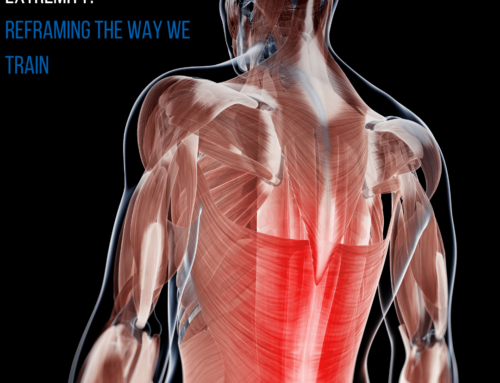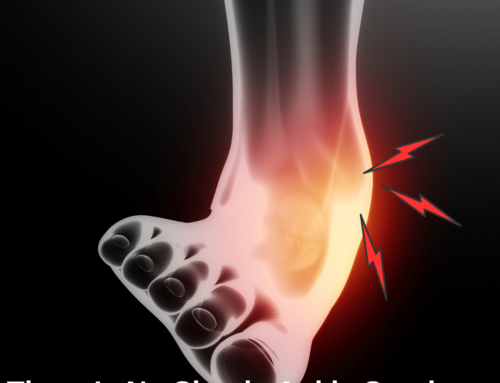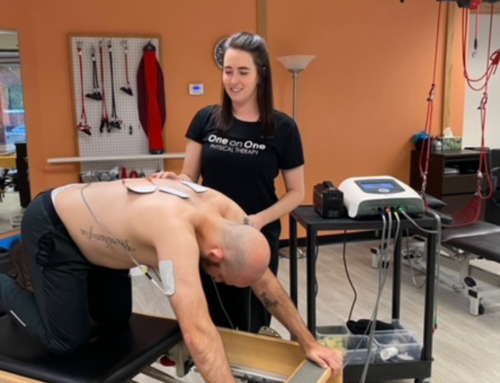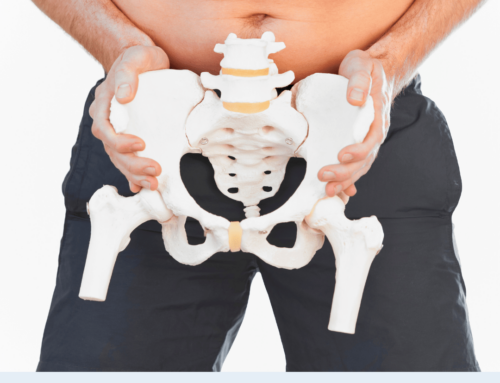Tennis Leg Care and Treatment

Get A Leg Up
A Physical Therapist can treat tennis leg and implement prevention strategies necessary to get you back on the court safely and quickly.
Injuries to the lower leg are common in tennis due to the high demand of the sport and the repetitive, quick movements required. Tennis leg is an incomplete tear or rupture of the calf muscle in the lower leg. The calf muscles include the superficial gastrocnemius, the larger of the lower leg muscles, and the soleus, the smaller, deeper muscle that runs under the gastrocnemius. The Achilles tendon connects the gastrocnemius and soleus muscles to the heel bone.
Tennis leg commonly occurs in players that range in age from 35 to 50 years old. This muscle injury may occur as a result of a sudden contraction of the calf muscles, for instance during a sprint or acceleration to reach a shot, a sudden change of direction, or during push-off in the service motion. Tennis players often report a sudden, sharp or burning pain in the leg, sometimes accompanied by an audible sound or “pop” and a feeling like they have been kicked in the leg. In most cases, the player is unable to continue play because of the severe pain, which makes walking very difficult.
When a muscle has been strained, it is stretched beyond its allowable length and tears. If you experience a calf strain or tennis leg, take immediate action. Fast and optimal first aid is critical for a speedy recovery. In severe cases, or if in doubt, consult your Orthopedist and/or Physical Therapist for further evaluation. If you are having difficulty walking, most orthopedists will put you in a walking boot so your leg can rest and heal while still being able to walk and function. Physical Therapists have a myriad of techniques to help decrease the pain and swelling, and restore motion, strength and power. Depending on the severity of the calf strain, recovery may take between 4-6 weeks.
Immediate Care
Rest. If walking is painful and difficult, get a pair of crutches so you don’t have to bear weight through the injured muscle. It is ideal to use the crutches as long as you are still limping. As the pain subsides, you may start putting weight on the foot. Once you can walk without a limp, you can ditch the crutches.
Ice. Cool the painful region. You can apply ice or a cold pack directly to the painful area for 20 minutes or submerge your lower leg in a bucket of cold water and ice for 10 minutes. Repeat this several times a day. Do not place an ice pack on the bare skin. Place a towel between the skin and the ice pack to avoid a cold burn from the ice pack.
Compression. Apply a compression wrap to the lower leg starting from the foot wrapping up to the knee. This is important as it compresses the small vessels in the calf and limits the bleeding and prevents blood and fluid from accumulating in the foot and ankle.
Elevate. Try to elevate the lower leg during the initial days following the injury to minimize the swelling in the foot and ankle.
The Road to Recovery
It is ideal to seek care from a Physical Therapist to guide you through the rehabilitation process. Here’s what you can expect during your rehabilitation:
Manual Therapy. The calf muscles are often very stiff and sore following the initial injury. Physical Therapists implement soft tissue mobilization techniques to restore the normal length and mobility in the injured tissue, so it is important to not skip this step.
Heel Lifts. Inserting a heel lift (with shock absorption) in both shoes for one to two weeks may help to ease the load on the calf muscles during walking.
Cardio Training. Swimming or gentle cycling for 30 minutes every day increases the blood flow to the calf muscles and enhances recovery. This may be challenging at the beginning of rehab, so let your Physical Therapist guide you.
Stretching. The calf muscles may still be painful early on, so be gentle when stretching. Step forward with the unaffected leg, keeping the heel of the back leg on the floor. The knee of the affected leg is kept straight. Shift your body weight forward and press the heel of the back leg firmly into the floor. You will feel a stretch in the upper calf region of the back leg. You can also stretch the deeper, shorter muscle in the calf. Start from the same position as described above, but now bend the knee of the back leg while keeping the heel on the floor. The stretch is felt lower in the calf. Hold each stretch for 15 to 20 seconds (no bouncing), followed by 10 to 20 seconds rest, and repeat 3 times.
Strengthening. As soon as you walk without pain, you will begin the strengthening phase of rehab. Heel raises are a good start to strengthening the calf muscles. Slowly rise onto your toes and hold this position for 5-10 seconds. Then slowly return to the starting position. Perform this exercise with both feet at the same time. You will progress this to heel raises off a step and on one leg.
Plyometric Training. Also known as “jump training” or “plyos”, these are exercises in which muscles exert maximum force in short intervals of time, with the goal of increasing power (speed and strength).
Agility Drills. To ensure that you are ready to return to tennis, agility drills will be performed that will work on your lateral movements, balance, speed, and coordination.
Return to Play
A gradual return to tennis is recommended. Ensure you perform a good dynamic warm-up before hitting so that your legs are fully warmed-up before playing. You can start hitting either against the practice wall or with mini-tennis and gradually increase the distance from the wall or your opponent on the court. Make sure you position yourself well for the ball by taking small steps. Start with your ground strokes, then progress to volleys, overheads, and serves. As long as you don’t have any pain and you can smash the ball with good footwork, you are ready to start playing points, games and a practice match. Once you have played practice matches for two weeks in succession without problems, you can return to competition.
Injury Prevention
You can reduce your risk for tennis leg by paying attention to the following points:
Prepare. The best way to prevent tennis leg and muscle strains is to sufficiently warm-up before playing. I know no one likes to make time to warm-up, but it is critical for injury prevention. Get to the court early to perform your dynamic warm-up. A 5-7 minute dynamic warm-up is ideal within 15 minutes of your match time. This includes movements to help lengthen your muscles to prepare for tennis and increases your heart rate and body temperature so your body is warm, which may help decrease your risk for injury. Once you compete your dynamic warm-up, grab your racket and start hitting. Your muscles will thank you.
Recover. Immediately following your match, stay on the court to stretch your arms and legs. They just did a lot of work so help the muscle cool down so you aren’t stiff or sore the next day. Stretching helps maintain flexibility and joint mobility. Hold each stretch for about 30 seconds. A few of my favorite stretches are best done on the floor, so it is ideal to throw a yoga mat down and finish your stretching in the club house or locker room. Cool-down stretching should be done within 30 minutes of coming off the court, so do this before you shower and change clothes. Then, go reward yourself with a glass of wine or beer!
Roll it out. Foam rolling is a great way to stretch and massage your muscles and fascia after you play. I recommend combining this with your stretching. Roll each muscle for about 30 seconds.
Repair. At the end of your day, take a warm bath with 1-2 cups of Epsom salts for about 15 minutes. The magnesium sulphate in the Epsom salts is soothing for sore, tight and tired muscles and diminishes pain and muscle tension promoting more restful sleep. So, take your bath before bedtime and catch a few more z’s!
Protect. If you have experienced a calf muscle strain or Tennis leg, consider applying a compression sleeve around the lower leg. During the cool weather months, adapt your clothing to the weather conditions. It may be a good idea to wear pants, running tights, or compression gear to keep your legs warm. Well-warmed muscles are better able to withstand pulling and traction forces than cold muscles.
Massage. Every few weeks, consider investing in a deep tissue or sports massage to help improve circulation and repair tired, sore, tight muscles. Massage helps your on-court performance, so make time for it!
Cross train. Cycling, running, Pilates and yoga as great ways to cross train for tennis, which build strength and flexibility and will help reduce your risk of muscle trains and tears.
Conclusion
Tennis Leg is a common injury seen in recreational tennis players that is a result of repetitive overload and lack of preparation and recovery. You will need to take time off tennis to rehab your injury. Even the more milder strains will benefit from a few physical therapy sessions to ensure that all mobility, flexibility and power return the injured muscle. Seek immediate care from a Physical Therapist to take advantage of the many treatment interventions available and to learn the prevention strategies necessary to get you back on the court safely and quickly.
Dr. Baudo Marchetti is a Board Certified Sports Clinical Specialist at One on One Physical Therapy, a multidisciplinary private practice in Atlanta. For nearly five years she was a full-time sports physiotherapist for the WTA Tour and is a tennis medicine expert. She teaches a Sports Physical Therapy course and assists in teaching orthopedics within the Division of Physical Therapy at Emory University. Learn more by visiting onetherapy.com.






